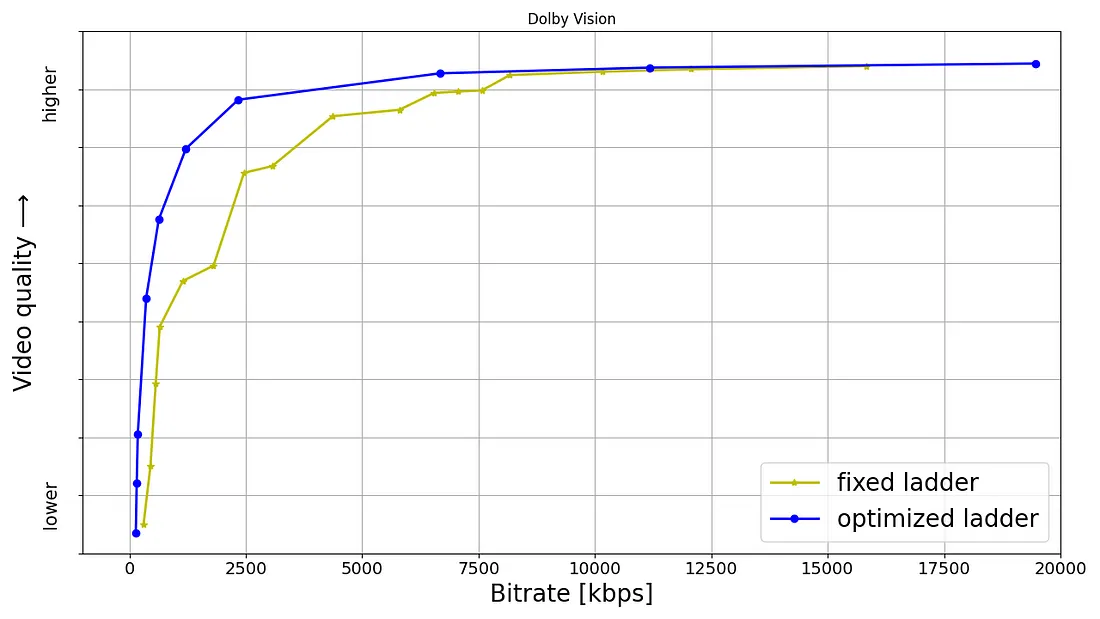Netflix quietly rolled out an HDR upgrade for 4K TVs – here are the details
Has Netflix been looking better lately on your 4K TV? Well, it should, especially if you’re a subscriber to the pricey Premium tier. As detailed in a post on the Netflix Technology Blog, the company recently completed an upgrade of its streaming library that specifically improves video quality for 4K HDR titles, something it carried out using a video encoding method called dynamic optimization – more on that in a bit.
The news couldn’t have come at a better time for Netflix Premium tier subscribers who may have been struggling with the reality of absorbing yet another Netflix price hike, one that has increased the cost for Premium from $19.99 to $22.99 per month in the US, and £15.99 to £17.99 in the UK. Its highest-quality ad-free tier may be expensive, but Netflix remains one of the best streaming services, and getting an HDR upgrade to boost performance on the best 4K TVs could help soothe the pain Premium subscribers might be feeling as the service once again puts the squeeze on their wallets.

From fixed to dynamic
Although Netflix’s tech blog post is packed with arcane engineering terms (and graphs, lots of ‘em), it makes clear that the upgrades follow the introduction of an HDR variant of VMAF (Video Multi-method Assessment Fusion), which is the company’s video quality metric. The ‘multi-method’ component of VMAF consists of a range of objective and subjective video quality measurements to evaluate parameters such as motion and visual information fidelity, along with detail loss.
The newly developed HDR-VMAF is a collaborative effort between Netflix and Dolby Laboratories and it involves “subjective tests with 4K-HDR content using high-end OLED panels in calibrated conditions created in participants’ homes,” according to Netflix’s post. Furthermore, HDR-VMAF is format-agnostic, measuring quality equally and independently for Dolby Vision and HDR10 programs, and it calculates scores based on an “ideal display,” one that’s “capable of representing the entire luminance range and the entire color gamut spanned by the video signal.”
A key benefit of HDR-VMAF is that it allowed Netflix to make the transition from fixed bitrate video encoding to using dynamically optimized (HDR-DO) encodes for 4K HDR video streaming. Netflix’s tech blog post also notes that HDR-DO not only delivers higher quality than fixed-ladder encoding but is more efficient, taking up only 58% of the same storage space on average.
Here’s how Netflix summarizes the improvements brought on by HDR-VMAF and HDR-DO:
- 40% fewer rebuffers
- Higher video quality for both bandwidth-constrained as well as unconstrained sessions
- Lower initial bitrate
- Higher initial quality
- Lower play delay
- Less variation in delivered video quality
- Lower Internet data usage, especially on mobiles and tablets
Analysis: Netflix is giving us better HDR everywhere – for a price
Netflix started upgrading its full 4K HDR library using HDR-DO in the first half of 2022, and the process was fully completed by June 2023. Right now, Premium subscribers can expect any movie or show with Dolby Vision or HDR10 high dynamic range they stream will be optimized using the company’s new 4K HDR picture quality metrics.
The visual benefits the upgrade brings should be apparent when viewed on any 4K TV, but it’s also meant to improve the experience of watching Netflix on tablets and phones, a good deal of which now support HDR and even Dolby Vision HDR. I recently watched David Fincher’s new movie The Killer (a Netflix original production) on my iPhone during a long flight and was impressed at how detailed and vibrant the picture looked, even on a small screen.
Is incredible-looking video on phones and tablets worth it to maintain a pricey Premium tier Netflix account? In my case, the answer is no, though when I rewatched The Killer in 4K and Dolby Vision on a 65-inch TV, the picture looked superb. Nonetheless, I’m impressed that Netflix can dynamically scale its 4K HDR streaming to maintain performance for a range of screen sizes and internet bandwidth conditions. In an increasingly competitive streaming landscape where viewers are more likely than ever before to cancel subscriptions at the drop of a hat, HDR-DO is one advantage Netflix can take to the bank.
You might also like
- Netflix’s Best Christmas Ever is a total flop – watch these 5 festive films instead
- 10 must-see movies arriving on Netflix in December 2023
- Netflix’s The Killer gets a trailer
stereoguide-referencehometheater-techradar